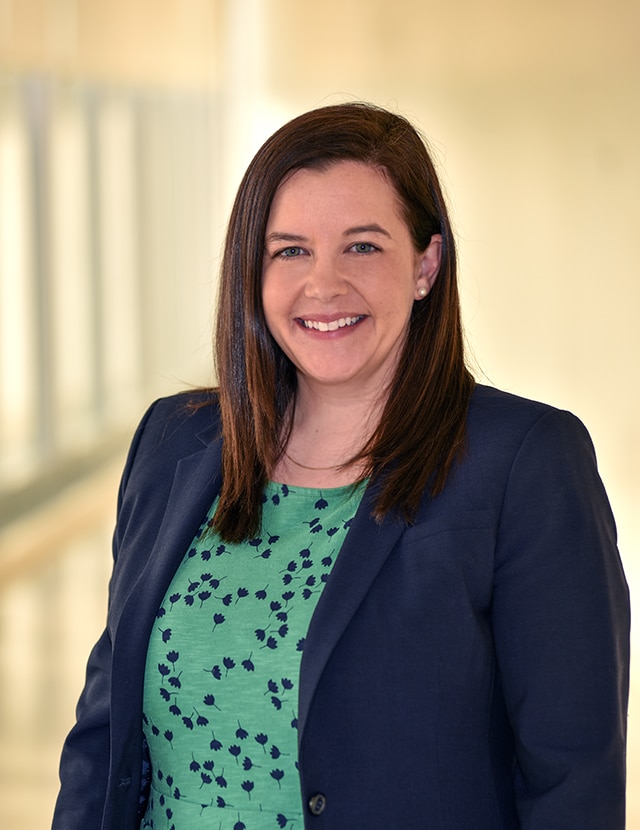What can you offer a Fortune 500 that makes just about everything? If you’re Shelby Bruce, you supply 3M with the trademark savvy it needs to protect its brands.
“I’m continuously learning new developments in the law, and continuously learning different products or brands, or creative marketing pathways that clients or companies are taking,” she says.

As the director and assistant chief trademark counsel at 3M, Bruce ensures its household names stick around for a long time. She manages the global trademark matters of each brand within her business group. Whether she oversees how they orchestrate licensing agreements or enforce trademarks, no stone is left unturned.
Of course, with multiple brands to serve, Bruce understands that her success boils down to juggling competing priorities. By creating strategies and protocols for when her clients enter a handful of legal scenarios, they can accomplish more in a fast-paced environment.
“One area that differentiates trademark law from a number of other practices is that you can be working on a large number of matters at any time, in many different jurisdictions,” the director explains. “It’s not a practice where you necessarily go in and spend a day on one very large case.”
Bruce thrives on big projects where the stakes are high. After 3M discovered that fraudulent websites were being created and counterfeit respirators were being sold under its name on websites and social media, Bruce became a key member of 3M’s Global COVID-19 Brand Protection Program. She architected the domain name enforcement protocol that 3M followed to remove over four hundred fraudulent domain names during the pandemic. “This work was really meaningful for me because it made a true impact in making sure that counterfeit respirators weren’t getting in the hands of consumers,” she reflects.
It’s also important to Bruce that she dedicate herself to causes beyond 3M’s offices. Disappointed with the lack of diversity in her profession, Bruce recently joined the board at Twin Cities Diversity in Practice, a nonprofit whose mission is to help its member organizations attract, recruit, advance, and retain attorneys of color.
“The legal profession has always been kind of a slow mover of change, so one big challenge is just the pace of change,” Bruce says. “It’s not moving at a pace that is quick enough for people who are passionate about this space. Making sure that diverse attorneys can come in the door while also feeling included, welcomed, mentored, and sponsored throughout their careers is something that the legal profession has had a hard time with.”
“Making sure that diverse attorneys can come in the door while also feeling included, welcomed, mentored, and sponsored throughout their careers is something that the legal profession has had a hard time with.”
Shelby Bruce
Just how slow is the legal industry to embrace change? According to the American Bar Association, the number of lawyers of color grew less than 3 percent from 2010 to 2020. So, getting law firms to hire more diverse attorneys is not enough for Bruce. She also wants to do her part to foster retention.
Before 3M, Bruce was an IP attorney at Norton Rose Fulbright for five years. She developed her trademark, copyright, and advertising expertise and served clients like 3M. But she credits the firm for surrounding her with mentors when she practiced copyright law, patent litigation, and false advertising.
“I was really immersed in pretty substantive client work, so even as a young attorney, I really felt like I was a part of the team from the very beginning,” Bruce remembers. “I had very great mentors at the firm, and I think as a young attorney that’s so important.”
She realizes just how instrumental her diversity of experiences was in preparing her for the role at 3M today. It helped her discover her strengths and weaknesses as an attorney. And she became an asset to iconic brands like Post-it and Scotch because of it.
That’s why Bruce recommends young attorneys dive into a wide variety of projects. “Especially in the early years of your career, really be open to a variety of different projects to figure out what interests you as an attorney,” she advises.
Even if that comes with trial and error, Bruce explains the outcome is worth it. “This will help to craft your practice and develop some level of a specialty,” she says.


